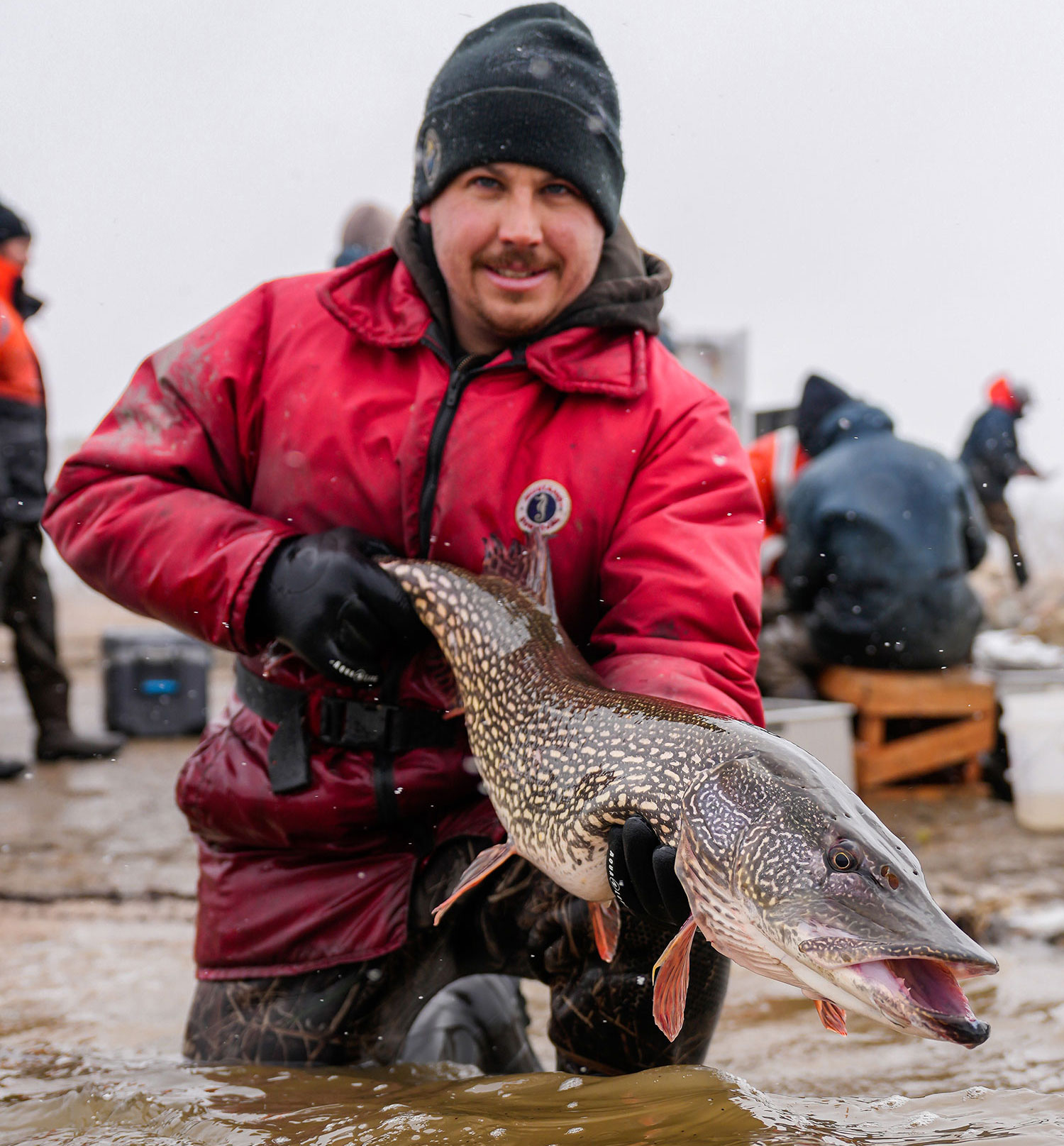Delayed Start, Great Ending
Ron Wilson with Photos by Ashley Peterson
While it wasn’t the latest start on record (that belongs to April 26, 2018), North Dakota Game and Fish Department fisheries biologists collected the first northern pike eggs of the spring spawning season on April 21 at Lake Oahe’s Cattail Bay.
“We got a late start to our spring after the pretty terrible winter,” said Paul Bailey, Department south central fisheries supervisor in Bismarck. “Typically, we like to be done collecting northern pike eggs about this time of year. Unfortunately, we’re now just getting started thanks to the late spring.”
On what certainly wouldn’t qualify as a spring day to brag about – strong winds, spitting snow and cool temperatures – fisheries biologists still collected 2.28 million eggs, or more than half of this year’s egg goal.
Jerry Weigel, Department production/development section supervisor, said fisheries biologists went into the short-lived spawning season with a goal of collecting 75 quarts of eggs, which translates to about 4.5 million eggs.
Weigel said a mature female pike in the 5- to 10-pound range will give up about 60,000 eggs to biologists, while a 15-pound pike will produce roughly double that.
“Typically, we can collect northern pike eggs from a variety of sources from a number of good pike populations across the state,” Bailey said. “This year we’re left with really one source given the current weather conditions. Lake Oahe just opened up a few days ago, which allowed us to get some nets in here to start collecting northern pike. A lot of our other productive pike fisheries in central and eastern North Dakota are still ice covered so this is really our best option right now.”
No matter. Fisheries biologists returned to Cattail Bay April 24 and collected a bunch more eggs, and then some, for a total of 119 quarts, far surpassing their goal.
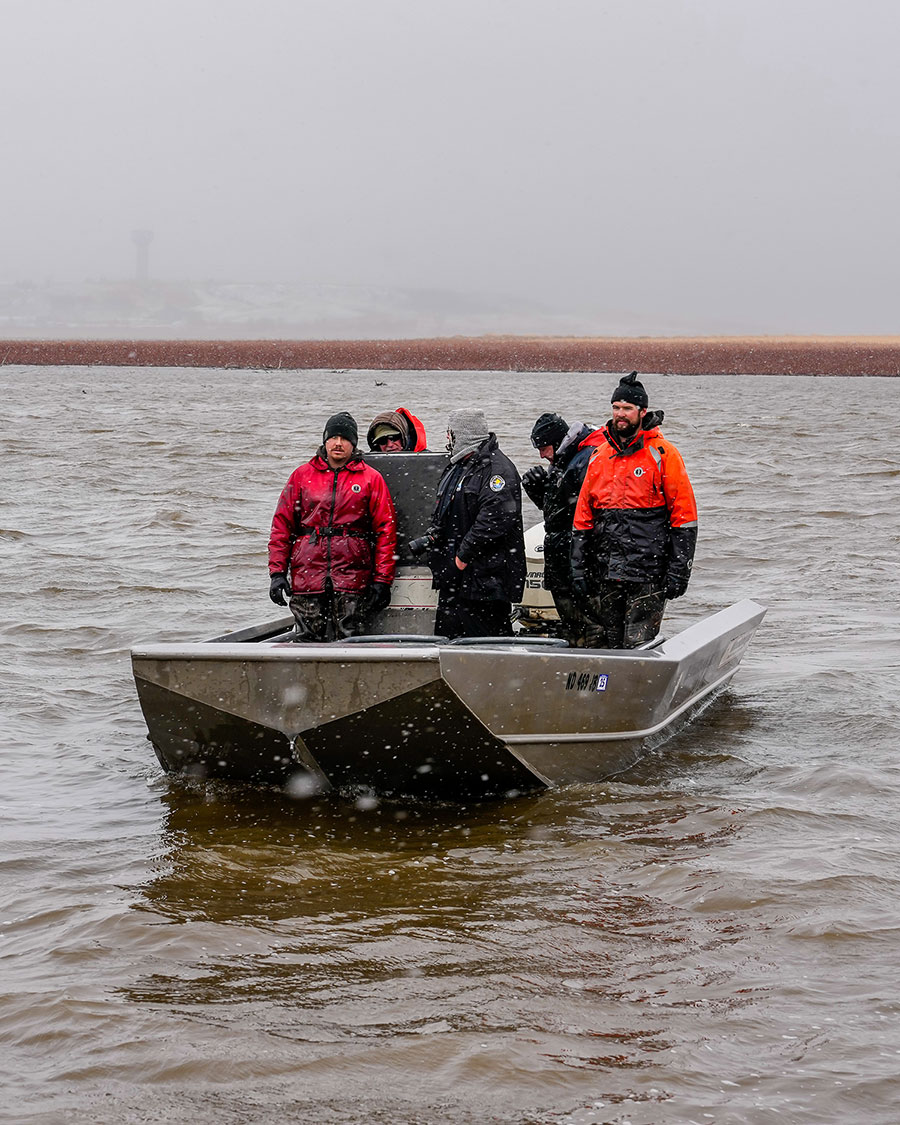
Fisheries crews don’t have the option of spawning northern pike in spring only when the weather is nice. Spitting snow, wind and cool temperatures are mostly the norm when the ice finally melts and these toothy fish are ready to dump eggs for future generations.
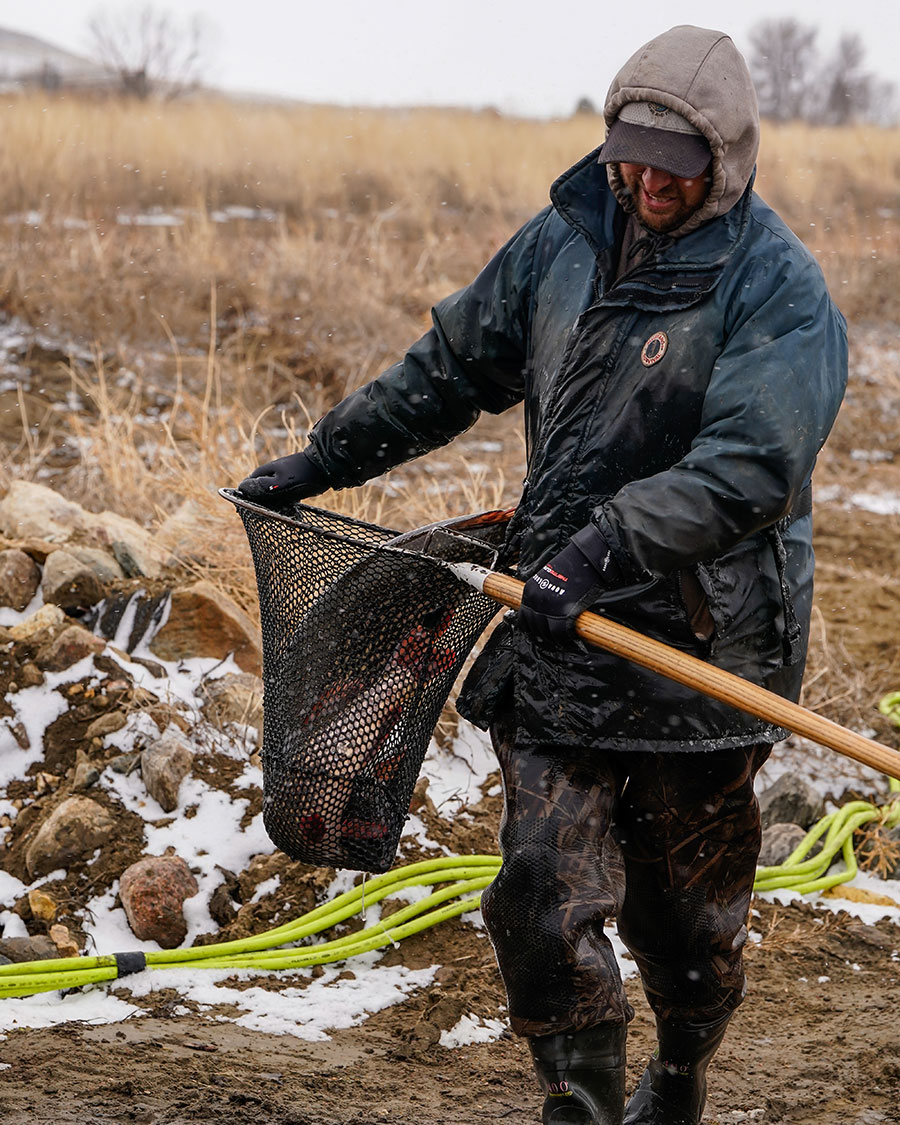
Fisheries crews use trap nets to collect pike swimming along the shorelines looking for suitable spawning areas. Once in the nets, male pike are sorted out from the female pike.
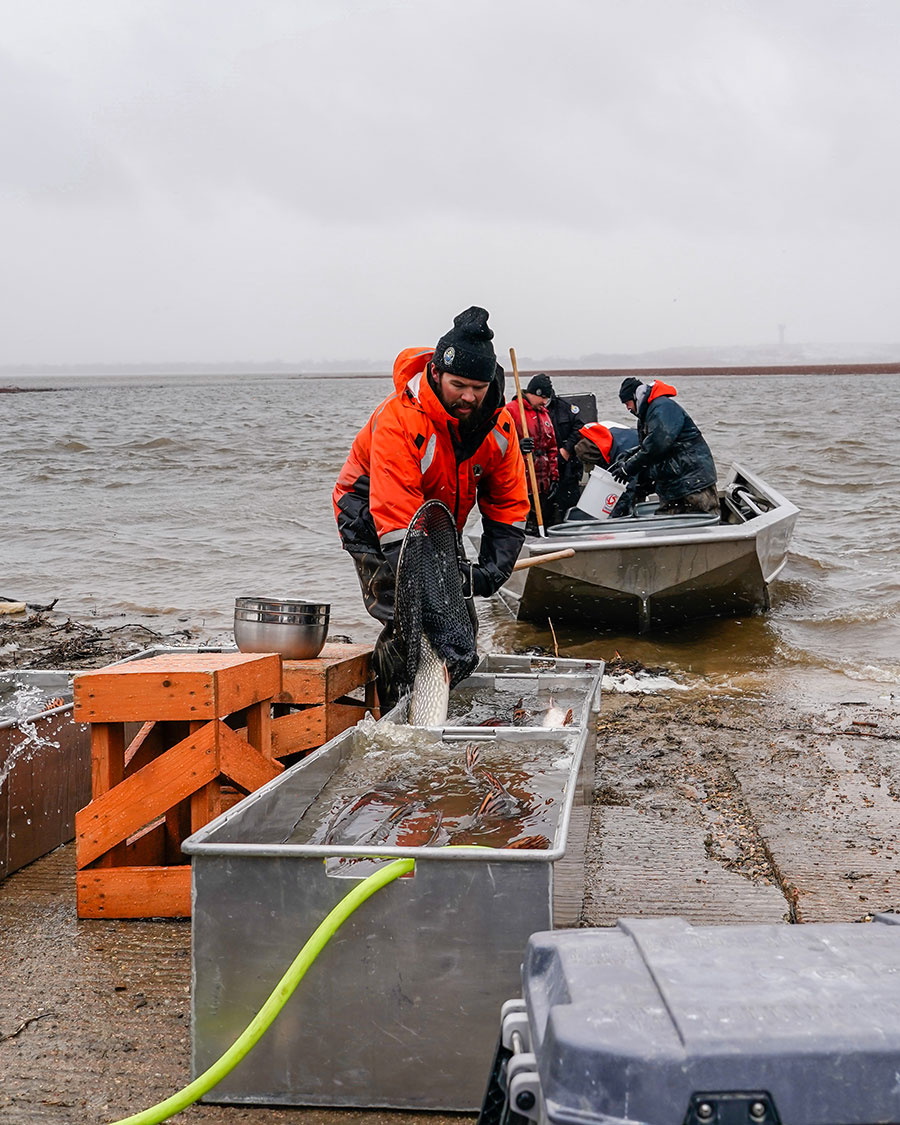
With the female pike in hand, fisheries biologists then determine which fish are ready to give up their eggs and those that haven’t reached that stage just yet.
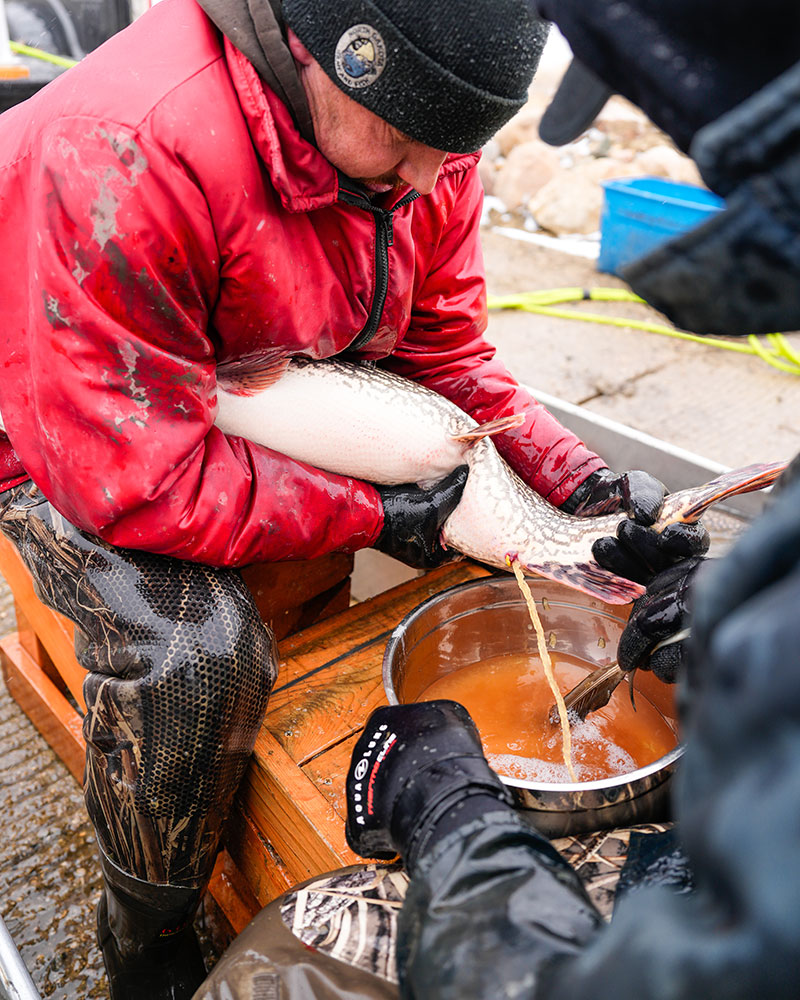
On shore, fisheries personnel strip milt from male pike into a bowl of water.
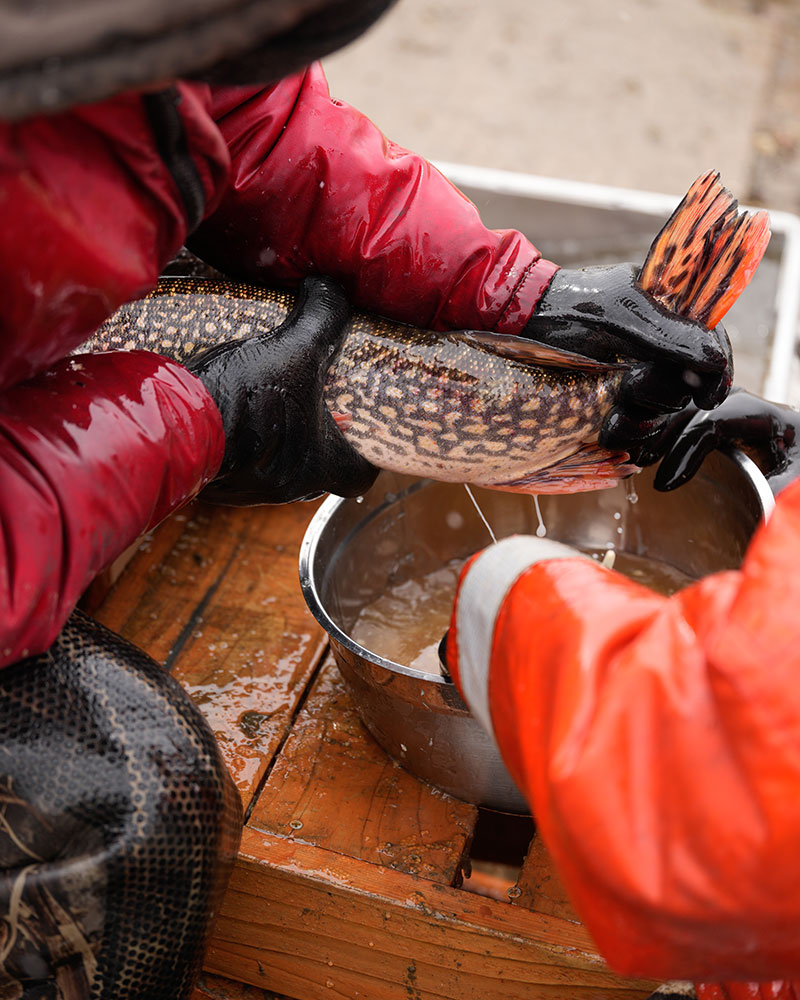
The eggs from female pike are taken next and added to the water and milt mixture. The eggs are typically fertilized within a matter of seconds.
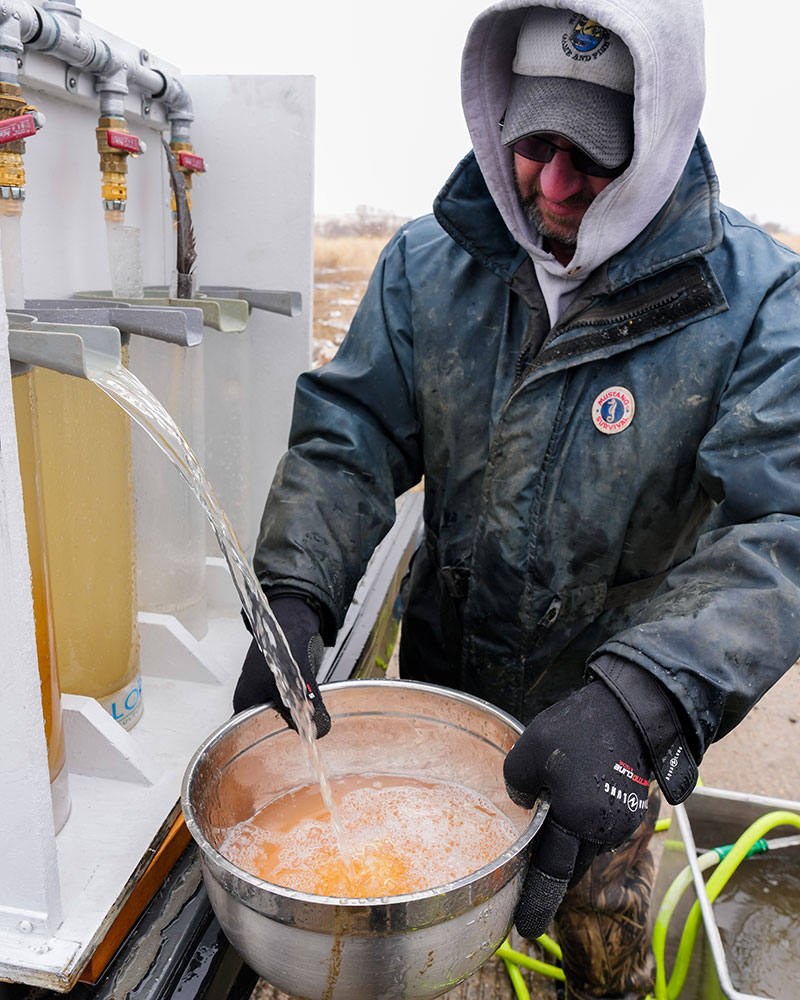
After the eggs are fertilized in a bowl on the spawning bench, the eggs then go into a washer to remove any debris.
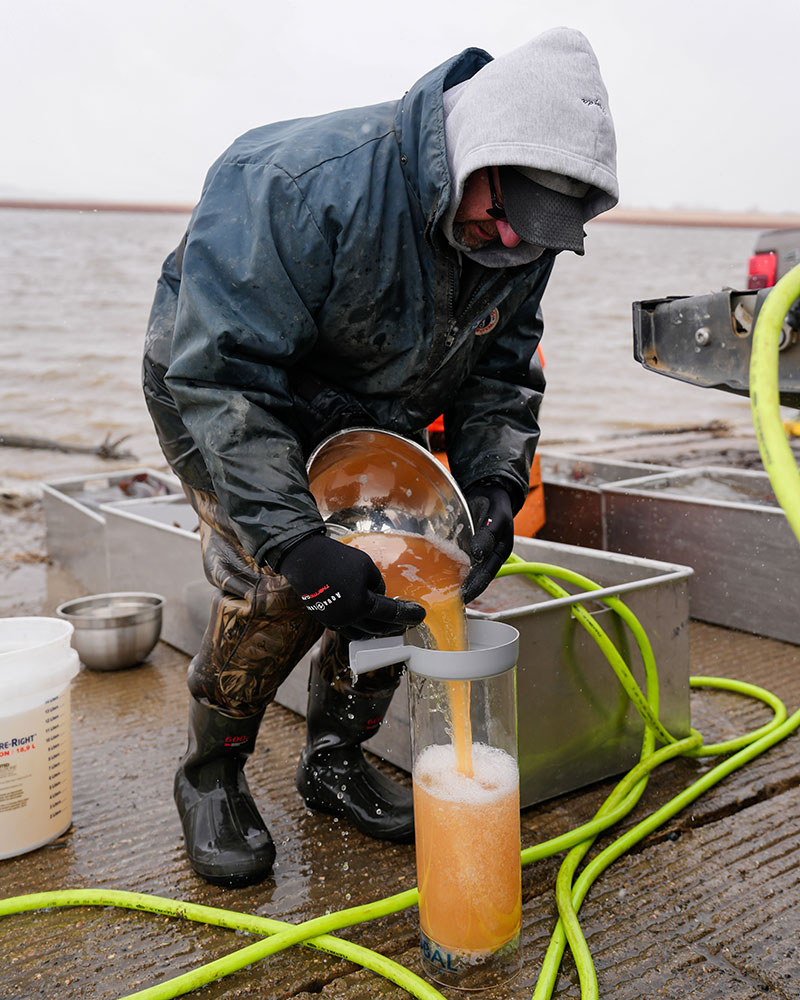
Some eggs are damaged and broken during the process and some just aren’t viable. Those that don’t make the cut for transportation to the fish hatchery are removed.
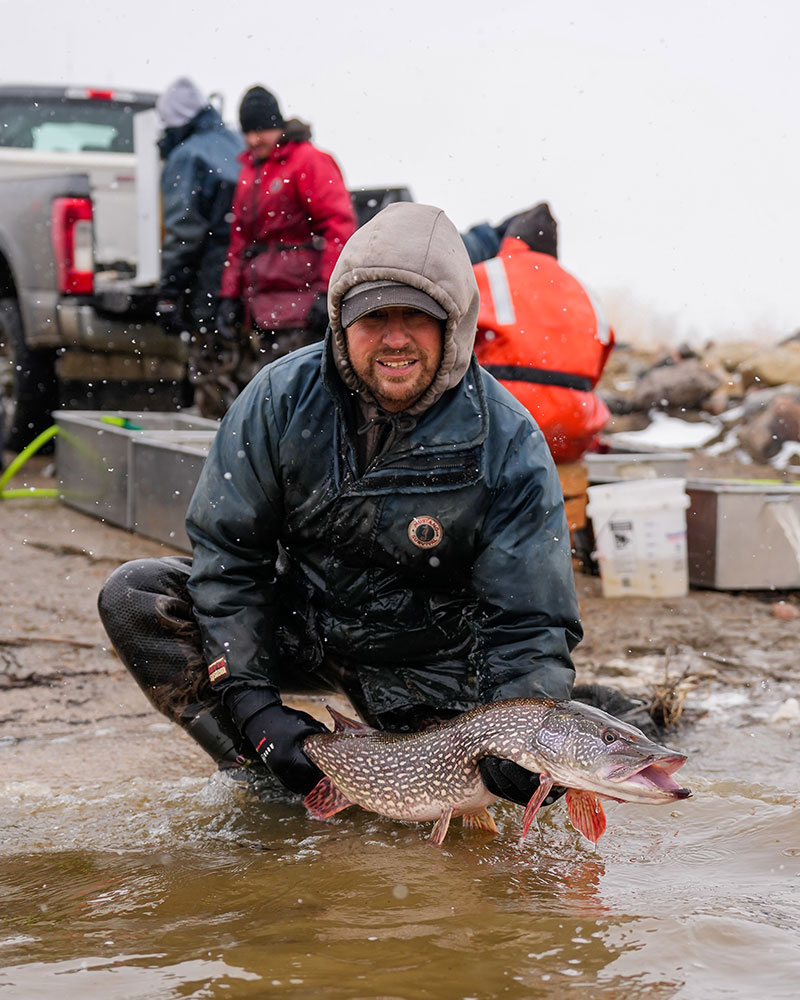
A nice northern pike.









